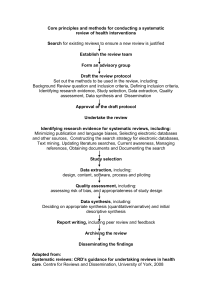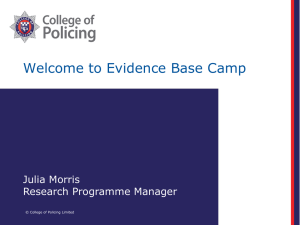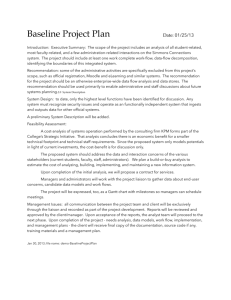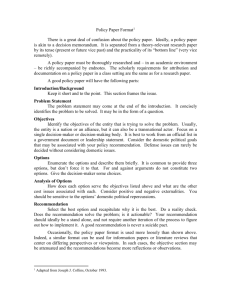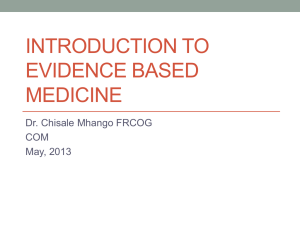Module 6: Making a case As our search for evidence
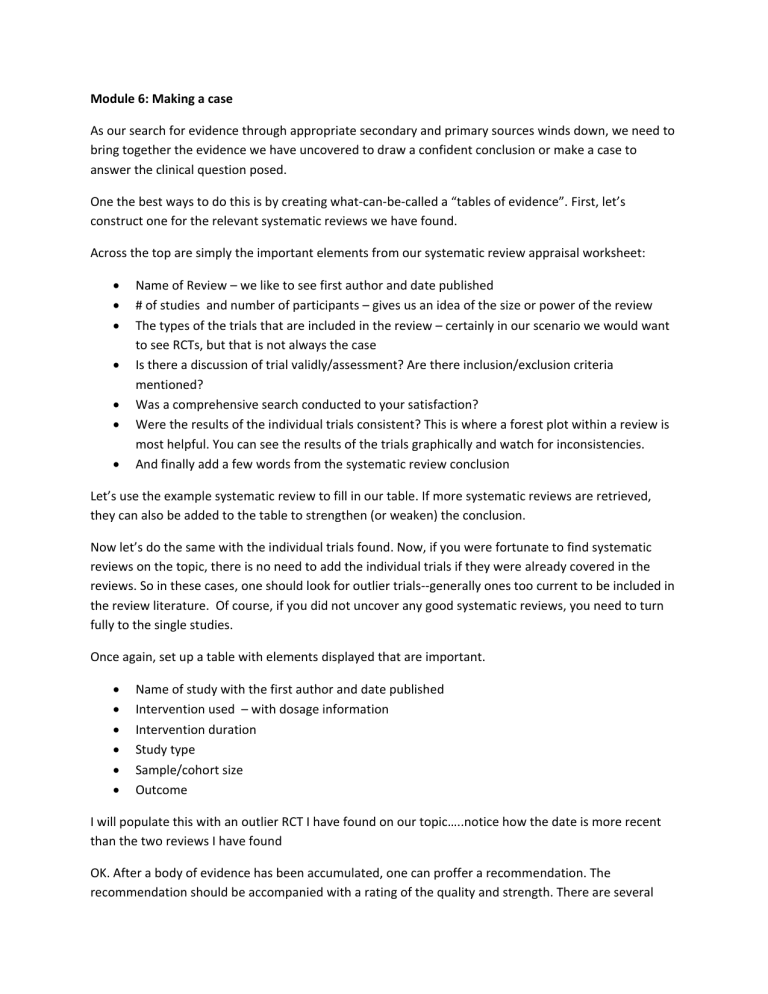
Module 6: Making a case
As our search for evidence through appropriate secondary and primary sources winds down, we need to bring together the evidence we have uncovered to draw a confident conclusion or make a case to answer the clinical question posed.
One the best ways to do this is by creating what-can-be-called a “tables of evidence”. First, let’s construct one for the relevant systematic reviews we have found.
Across the top are simply the important elements from our systematic review appraisal worksheet:
Name of Review – we like to see first author and date published
# of studies and number of participants – gives us an idea of the size or power of the review
The types of the trials that are included in the review – certainly in our scenario we would want to see RCTs, but that is not always the case
Is there a discussion of trial validly/assessment? Are there inclusion/exclusion criteria mentioned?
Was a comprehensive search conducted to your satisfaction?
Were the results of the individual trials consistent? This is where a forest plot within a review is most helpful. You can see the results of the trials graphically and watch for inconsistencies.
And finally add a few words from the systematic review conclusion
Let’s use the example systematic review to fill in our table. If more systematic reviews are retrieved, they can also be added to the table to strengthen (or weaken) the conclusion.
Now let’s do the same with the individual trials found. Now, if you were fortunate to find systematic reviews on the topic, there is no need to add the individual trials if they were already covered in the reviews. So in these cases, one should look for outlier trials--generally ones too current to be included in the review literature. Of course, if you did not uncover any good systematic reviews, you need to turn fully to the single studies.
Once again, set up a table with elements displayed that are important.
Name of study with the first author and date published
Intervention used – with dosage information
Intervention duration
Study type
Sample/cohort size
Outcome
I will populate this with an outlier RCT I have found on our topic…..notice how the date is more recent than the two reviews I have found
OK. After a body of evidence has been accumulated, one can proffer a recommendation. The recommendation should be accompanied with a rating of the quality and strength. There are several
rating scales or taxonomies in the journal literature and on the Internet .One of these is entitled the
Strength of Recommendation Taxonomy (simply known as SORT) was developed for primary care and works well with many sources of evidence . In this rating system,
An A-level recommendation is based on Level 1 studies - that is, consistent and good-quality patient-oriented evidence;
For our therapy scenario Level one means that the evidence is mainly in the form of systematic reviews or meta-analysis or multiple RCTs with consistent findings, or a large well done highquality individual RCT or an all-or-none study, which show dramatic results with no inconsistent results.
A B-level recommendation is based on Level 2 studies. Level 2 studies include Systematic reviews of lower quality clinical trials or of studies with inconsistent findings, or lower quality clinical trial such as cohort studies, or case-control studies.
A C-level recommendation is based on consensus, usual practice, opinion, disease-oriented evidence.
You have seen the phrases: patient or disease oriented-evidence. Let’s define each:
The best evidence is patient-oriented which measures outcomes that matter to patients: death, quality of life, etc.
Disease-oriented evidence measures numeric values or end points that may or may not impact patient quality of life
Here is a simple useful flow chart for the SORT taxonomy recently published in the American Family
Physician Journal. This makes it easy to rate the evidence. For our St. John’s Wort scenario, I would give the evidence an A-level recommendation.
Once you are comfortable with your recommendation, you are done! Please be aware that a low recommendation does not mean an invalid or incomplete assessment. If the evidence does not warrant an A recommendation, so be it. It is just as valuable to say the evidence does not support this intervention.
So there you have the three simple steps to developing an answer to a clinical question.
You have completed Module 6.

